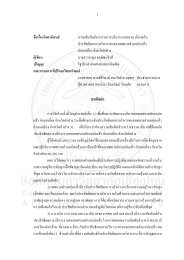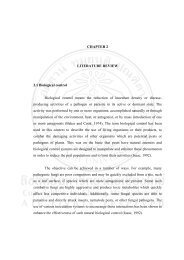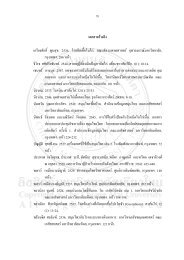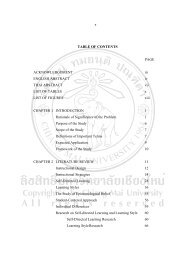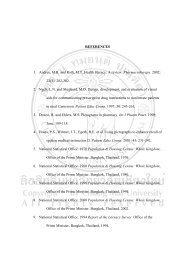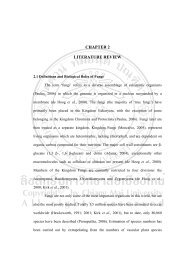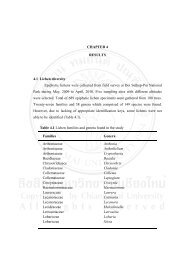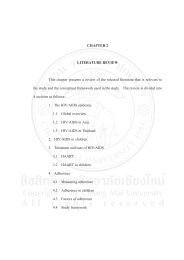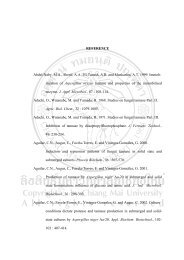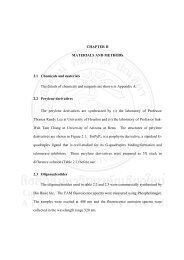prevalence and molecular characteristics of vibrio species in pre ...
prevalence and molecular characteristics of vibrio species in pre ...
prevalence and molecular characteristics of vibrio species in pre ...
Create successful ePaper yourself
Turn your PDF publications into a flip-book with our unique Google optimized e-Paper software.
23<br />
Cl<strong>in</strong>ical stra<strong>in</strong>s <strong>of</strong> V. parahaemolyticus have the ability to produce<br />
thermostable direct haemolys<strong>in</strong> (TDH) <strong>and</strong> TDH related haemolys<strong>in</strong> (TRH) <strong>and</strong> can<br />
cause gastroenteritis <strong>in</strong> humans (Su <strong>and</strong> Liu, 2007, Vongxay et al., 2006). Most <strong>of</strong> the<br />
tdh positive stra<strong>in</strong>s <strong>of</strong> V. parahaemolyticus exhibit the Kanagawa phenomenon, an<br />
enzymatic lysis <strong>of</strong> red blood cells on Wagatsuma blood agar plates (Su <strong>and</strong> Liu, 2007,<br />
Vongxay et al., 2008). Several <strong>in</strong>vestigations found that only 1-3% <strong>of</strong> the<br />
environmental stra<strong>in</strong>s <strong>of</strong> V. parahaemolyticus exhibit the toxic activity (Lee et al.,<br />
2008a, Vongxay et al., 2006, Sobr<strong>in</strong>ho et al., 2010), (Table 8). But recent reports on<br />
the <strong>pre</strong>sence <strong>of</strong> virulence genes <strong>in</strong> environmental stra<strong>in</strong>s <strong>of</strong> V. parahaemolyticus<br />
found an <strong>in</strong>creas<strong>in</strong>g percentage <strong>of</strong> tdh <strong>and</strong> trh gene-carry<strong>in</strong>g stra<strong>in</strong>s (Deepanjali et al.,<br />
2005, Raghunath et al., 2008, Sujeewa et al., 2009, Zimmerman et al., 2007) (Table<br />
8). Those studies showed that, trh-bear<strong>in</strong>g V. parahaemolyticus are more frequently<br />
distributed <strong>in</strong> tropical seafood than tdh-bear<strong>in</strong>g V. parahaemolyticus.<br />
V. vulnificus is an opportunistic human pathogen (Cañigral et al., 2009) <strong>and</strong><br />
unlike V. parahaemolyticus <strong>and</strong> V. cholerae, environmental <strong>and</strong> cl<strong>in</strong>ical stra<strong>in</strong>s <strong>of</strong> V.<br />
vulnificus showed no difference <strong>in</strong> the potential to produce tox<strong>in</strong>s. Human V.<br />
vulnificus <strong>in</strong>fections shows cl<strong>in</strong>ical signs <strong>of</strong> wound <strong>in</strong>fection, fever, chills,<br />
hypotension, bulbous like sk<strong>in</strong> lesions which are rapidly progressive <strong>and</strong> 50%<br />
mortality <strong>in</strong> septicaemia conditions. The polysaccharide capsule <strong>and</strong> the production <strong>of</strong><br />
siderphores by this organism are considered as virulence factors (Starks et al., 2000).<br />
Tison <strong>and</strong> Kell (1986) studied the virulence <strong>of</strong> V. vulnificus isolated from the mar<strong>in</strong>e<br />
environment. These authors found no difference <strong>in</strong> their production <strong>of</strong> virulence<br />
factors, both <strong>in</strong> vitro (cytolys<strong>in</strong> <strong>and</strong> cytotox<strong>in</strong>) <strong>and</strong> <strong>in</strong> vivo (mouse pathogenicity)<br />
among cl<strong>in</strong>ical <strong>and</strong> environmental isolates <strong>of</strong> V. vulnificus. Similar to this study,<br />
Wong et al. (2005) also found that environmental stra<strong>in</strong>s <strong>of</strong> V. vulnificus exhibit a<br />
similar virulence to cl<strong>in</strong>ical stra<strong>in</strong>s <strong>in</strong> mice. These data were supported by Stelma et<br />
al. (1992).




